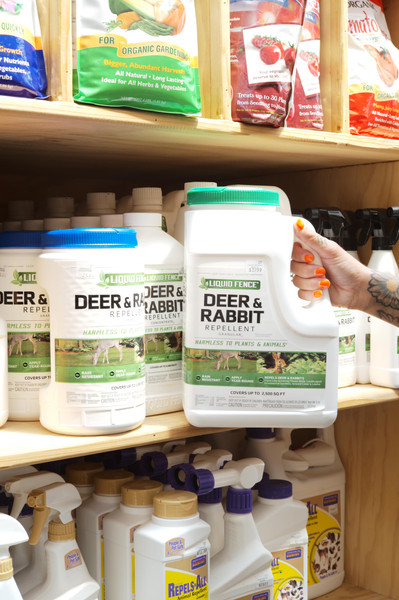How to Repel Deer and Rabbits in the Garden
Posted by Jessie Jacobson on May 26th 2024
How to Repel Deer and Rabbits in the Garden
They may be cute while prancing through a meadow or navigating snow in winter, but in the garden, deer and rabbits are far from fun. As new growth emerges, when new plants are planted, or just when that long-awaited bloom is about to open, the top is lopped right off. The best way to get a handle on our furry friends in the garden is to accept that they here to stay, embrace their cuteness, then control for the things we can. Take action before deer and rabbits settle in and make your yard and gardens part of their lunch rotation.
Who is eating my plants?
If you see the culprit eating your plants, then identification is easy. If you do not see them, which is often the case, it’s still possible to identify who is responsible. Identification allows you to determine how to handle the situation while you live in harmony with all the animals of the world.
Rabbits
If rabbits have visited the garden, you’ll know it. With their very sharp teeth and the way in which they bite, they leave a clean, angled cut on the stem. Rabbits love tender, new growth, so protecting new shoots until they are at a less appetizing stage can be helpful.
Deer
Deer teeth tear plants rather than cut them, so the damaged plant will have rough rather than clean-cut edges.
What is a gardener to do?
Plant deer and rabbit resistant varieties.
Check out this blog for a comprehensive list of great choices. Do know that deer will eat almost anything. The trick is to get one step ahead of the furry marauders by gardening with plants that are not their favorite. Do that, and they might just cruise over to someone else’s yard.
Use repellants! And actually use them!
There are plenty of scents deer dislike, and repellents use these scents to mask the delectable smells deer prefer. Repellants are just stinky stuff. They aren’t harmful or toxic to you or the environment. Repellants are sold in granular or liquid form and are easy to apply. Apply repellants early and often to train deer and rabbits away. Shop repellants here!
Physical Barriers
For rabbits, little fences work well. They can hop, but not very high. They can squeeze through tiny holes and crevices, so make sure the grid of the fence is tightly woven. Unfortunately, deer require very high fences, at least 8 feet because they can jump very high. If lieu of a large fence, deer must believe they don’t want to enter an area. Electric fences work because, once zapped, deer remember the sensation and believe they cannot cross that barrier by jumping. Another option is to tightly strung fishing line between rebar stakes, at 1.5’ and 3’ increments, around the area you’d like them to avoid. Deer are skittish, and because they feed mostly early in the morning or at dusk it will be hard for them to see the fishing line, but will feel uneasy about something they can’t see touching them as they try to enter the area.
Stick with it!
Don’t get discouraged. Most plants tolerate being munched on a bit. They will grow out of it and perennials will come back next year. We are happy to help with all your animal repellent needs, just give us a shout!

